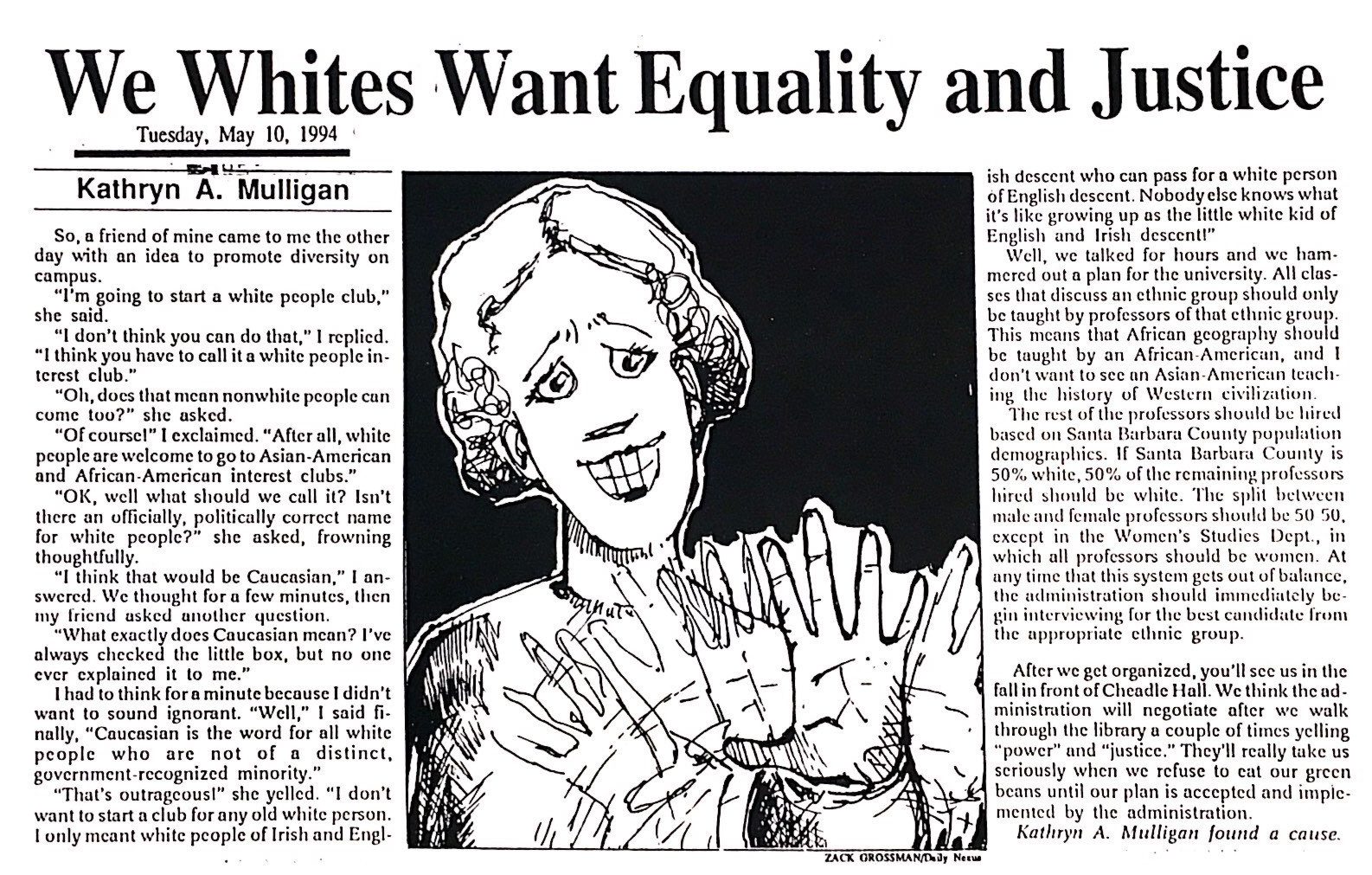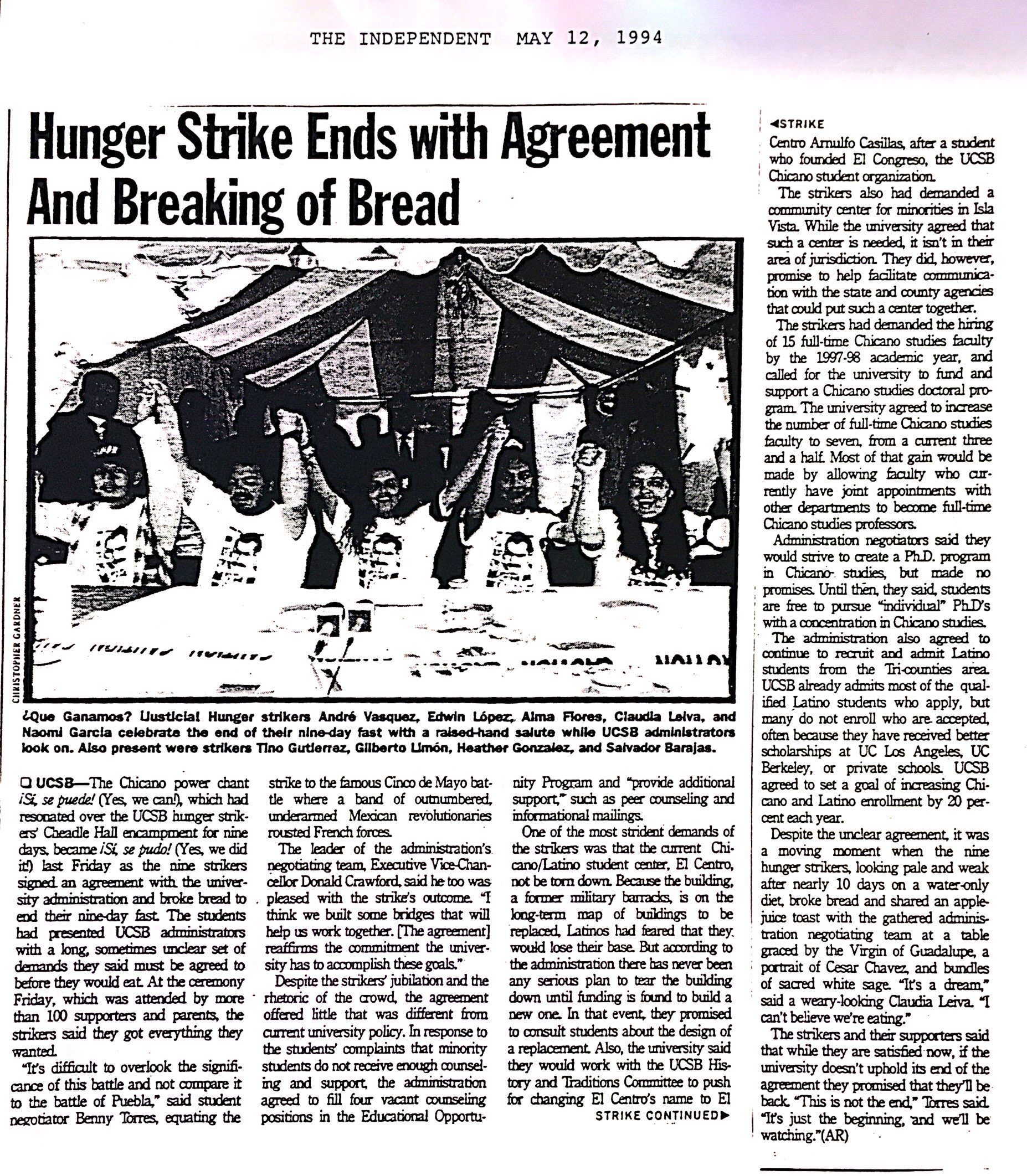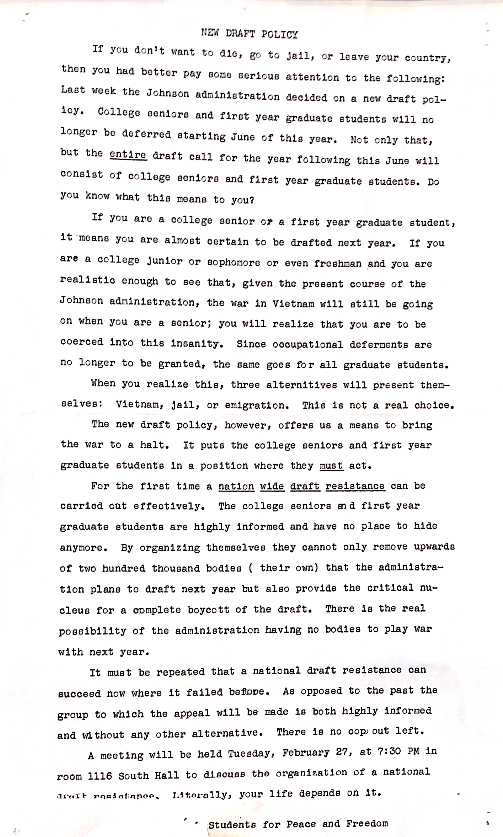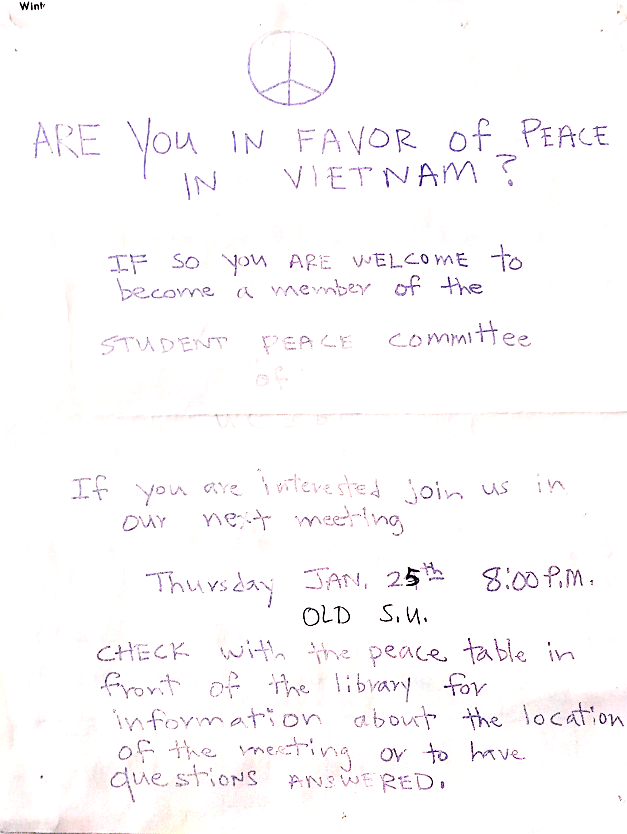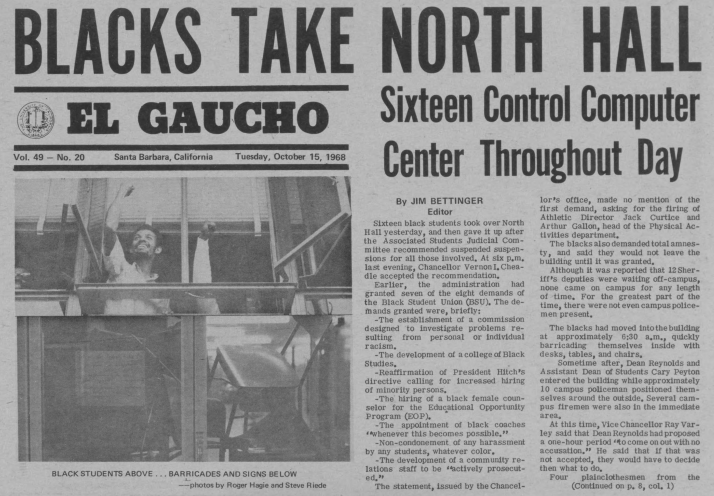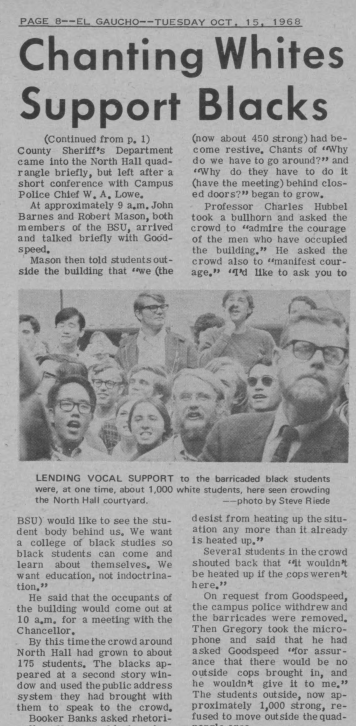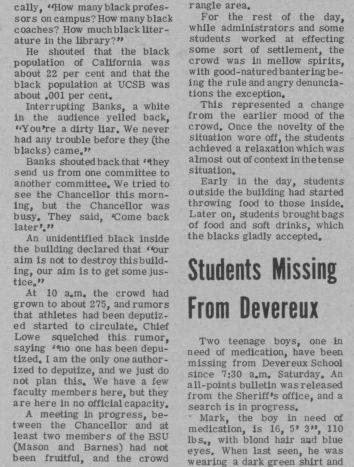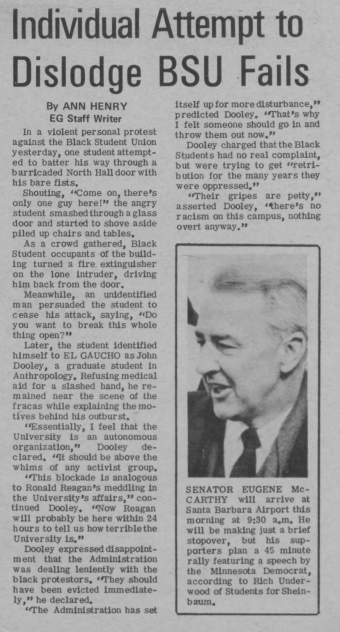Taylor Clark, interviewed by Jenna Norwood
The interviewer met with YDSA co-chair Taylor Clark to discuss the demonstration concerning the influx of COVID money received by UCSB. Clark details his involvement in YDSA, as well as how the chapter found out about the money, steps they took to contact the administration, and how they planned the march to chancellor Yang’s house to demand answers.
Just to explain a little background about what I’m researching for my project. So last year, UCSB received an influx of COVID money from the government in 2020. I believe it was around twenty-two million dollars and the funds seem to be unaccounted for and the university was just not being transparent about where the money was going, what it was doing, and it led to a lot of confusion and then anger among the students. So today I’m here interviewing Taylor Clark, a member of YDSA just to ask him a few questions about the march that was led to demand checks for the students from the COVID relief funds. So can you just tell me a little bit about your involvement In YDSA and the position you hold, and just a little bit of how you got to be so active in this organization?
So I am YDSA’s co-chair that essentially makes me- It’s similar to a co-president situation, but well, we kind of think of it as like a facilitator in chief. So my role is really to facilitate the priorities we decide on as a chapter. And to the best of my ability to make sure those things are effectively carried out, whatever they may be, at least in theory. Well, what was the rest of your question?
Just like your involvement and how you got to be so active, like how you got introduced to it?
Yeah. So our chapter of YDSA got started from the UCSB chapter of Students for Bernie in the 2020 presidential campaign after the election. We essentially want to continue organizing and looking for ways to do that, and we felt that the young Democratic Socialists of America best suited our chapters, values and the sort of political project we are pursuing. So in the wake of Bernie’s loss in the election, we essentially voted to transition and become a YDSA chapter. When I was at the time, I was one of the people who was really pushing us to become a YDSA chapter because I didn’t want to, you know, throw in the towel after the campaign. But yeah, I suppose that’s kind of the abridged version of how I got involved in YDSA, after I was what’s called a campus core leader in the Bernie campaign, which is essentially someone who got some training from the campaign itself to then go and organize students, And then after serving as a campus core leader, I ran for co-chair and We wrote a constitution for ourselves as a YDSA chapter, and I got elected as I got like two, two and a half years ago. Something like that weirdly enough. And yeah, just been organizing with YDSA ever since.
Yeah, that’s super great! So I know the way that YDSA is organized is that they bring up a certain topic that people want to discuss, so regarding the COVID money, how did the YDSA chapter find out about the money given to UCSB? And what were the initial steps into digging deeper on what the money was going to be used for or what you guys thought would be the right way for UCSB to use the money?
Yeah, for sure. So from my memory, it was one of our chapter members at the time whose name is Patrick, Patrick Fairbanks. He essentially, I forgot exactly what sort of turned him onto it, how we found out about it. But some way or another, he sort of discovered that the university had received a lot of money from the federal government in the CARES package, and that for whatever reason, a lot of this money wasn’t being spent. And at first, our approach really was to just figure out what was going on there and why it looked, from our perspective, why the university was just sitting on over $10 million in COVID relief funds? So yeah, yeah, I still have no idea what ended up happening to that money, funny enough.
Really? That’s Interesting!
Yeah, It’s an interesting follow-up project, like research projects on what exactly it all got spent on, but we haven’t had at the time to do it. Anyway, so yeah, one of our chapter members, Patrick Fairbanks, who later became the chapter secretary for some time, essentially kind of discovered that a lot of the money the university got from the COVID relief fund had not been spent, and we initially started trying to have a conversation with the university. I believe we talked to a few vice-chancellors and other university representatives to essentially just figure out where the money was supposed to go. And the university’s response, in so many words, was essentially that they felt that they needed to save the money because they were running a deficit and, you know, the kind of tagline the catchphrase that, that administration uses whenever they have to justify this sort of thing is, oh, budget cuts. We’re not getting as much money as we used to from the state, etc. So when we brought it up to the vice-chancellor, she essentially said the reason the money hasn’t been spent is because we need to use that money to cover the University’s deficits related to COVID. The ironic thing is that, like she cited budget deficits and decreased state funding as the reason for me to retain the money, but that year, the university had actually received significantly more money from the state than had in previous years. I think to the tune of like sixty million dollars more.
Oh wow.
Yeah, a fairly significant sum. So the university actually receives a lot more money from the federal government from federal and state government than the vice-chancellor was essentially kind of implying and didn’t really make sense to say that they needed to hold on to all of that COVID relief money because they’re just this boost in funding from the state for that year.
Especially to say that, you know, that this money was given for COVID relief, but then they’re using it for a deficit, which is for two different purposes. So I could see how people would react with confusion and anger towards that.
Yeah, absolutely. That’s when we discovered that that was really what the confusion started to turn anger for, I think understandable reasons. And so at that point, we started pivoting towards, well, thinking about the things that would be a lot more useful that that money could be used for. And kind of the immediate thing that came to mind, especially with the relief, like the stimulus checks that were going out at that time was just something that made the most sense. I think that was also something that Patrick initially came up with back in the day. And so we did some simple math and worked out that the amount of money that they were sitting on could be sent to students and about like nine hundred dollars even checks and would effectively use up a lot of the money, but leave a little bit leftover for, like important sanitation work, which the university said that they needed some of the money for, I believe. And from there, we went on to eventually organize a march around it, we talked and unanimously passed a resolution sort of endorsing the idea. And eventually, the university didn’t really give ground, and once summer hit, we kind of lost steam. It was very hard to sort of keep this energy after that. But yeah.
So do you remember anything, based on the research that I did, it seemed like there was a series of emails that were sent between members of YDSA and staff of UCSB. Like, if you don’t remember, it’s perfectly fine, but do you remember the tone of the emails? And if they seemed kind of receptive to the cause of anywhere or where they just kind of more like dismissive of what you guys were trying to do?
So, yeah, first they were essentially, the first round of emails were essentially sympathetic and saying, “yeah, we understand these are hard times with university needs some money”, and then I personally was not really the person writing emails or sending them, well, I’m not even sure I read them all. It was mostly handled by our secretary at the time. But my understanding from what I remember is that at first university kind of expressed sympathy but then the problem didn’t go away. There was some frustration with that.
Yeah, yeah. And then from there it seemed like you guys kind of started planning the march after you calculated the numbers. Do you remember the reaction from the staff to the march taking place? Were they dismissive again? Or were they kind of sympathetic to the march taking place? Also, did you have to ask permission? That was the question I wanted to ask.
Oh no. YDSA historically does not really ask for permission to do these things.
I think, yeah, that’s what I figured.
Yeah, yeah. It’s kind of what my pride points for our chapter is. We just do what we feel like we need to do. Anyway, So I’m sure that, you know, the feelings of staff were not monolithic, and I’m sure some would probably be a lot more sympathetic to the idea than others. The only interaction we had with staff, during and after the march was the vice-chancellor, I think it was the vice-chancellor or someone from an administration, not the person previously. But some folks from administration essentially monitored the march and that was, it was explained to me that that was their substitute for having like a police presence, which is obviously preferable to have a few staff people there instead of police to protest. Yeah. Um, and I expect the folks we talked to then were pretty sympathetic, I don’t think they spoke for the university in any official capacity. I think they were just expressing personal sympathies. And we did try to schedule some follow-up meetings with the university after the march. Again, there were lots of emails that I don’t really remember, but my understanding was that we got kind of stonewalled and I think the university got essentially tired of meeting with us because but they essentially just wanted to say, “We’re holding on to this money for these deficit problems”, and they weren’t. You know, they want to make us happy, but they didn’t want to change their position on the issue.
Yeah, exactly, yeah. And that’s obviously very frustrating from a student standpoint, knowing that there’s this large sum of money, especially in our position, knowing that we are students and that we need help more than ever, especially because of COVID. So I could see where the frustration would lie on the student side, but for the purpose of the transcription. If you could just go through like the day of the march from what you remember, like kind of the series of events, how people were feeling during the march, like how just the vibe, the overall vibe of the march, just for the purpose of the transcription so people can know what the day kind of felt like.
For sure. For sure. So, marches always have a sort of anxiety leading up to them, at least for the people organizing them, because, you know, you always have this impression that no one’s going to show up. So I think that I remember most from the beginning of the day. It’s like this kind of nervous excitement. We had gotten sort of all the materials together, and I tend to be kind of an early bird. So I was the first person at the site like an hour early or something waiting for other folks to come back. And we started in front of the UCen, and, you know, at first, it’s kind of a trickle of people. We had some music going, and I think some signs and we also had a lot of paraphernalia that say, we had like flags and banners and all sorts of things, which was a lot of fun. Anyway, It’s kind of starts to trickle, a couple of people start coming kind of get set up and then once it’s like ten minutes past the time you say everyone’s supposed to be, that’s when folks actually get there. We got a group of, I think, 40 to 50 people together. And yeah, from there, it was kind of just a matter of you know, again, the chanting and stuff starts to happen.
And you went to Chancellor Yang’s house correct? Yeah, yeah. Based on the research I did, it didn’t seem like he was home or anything like that.
It did not seem like that. I’m actually curious where he was at the time.
Yeah, that’s a good question.
Yeah, I wonder if I see he was at like off-campus house or something.
I’m sure he was somewhere, and then there was also a letter that he sent, correct? He sent out a letter saying, this is why the checks are not coming. Or maybe it wasn’t him specifically, but I remember getting something in my USCB email.
Oh, that’s interesting. I don’t remember that too concretely. Unfortunately, I think from what I remember, which may very well be wrong because it has been a little while. Yeah, but I think they alluded to it kind of in a larger email as well.
Yeah, yeah. I think that’s what I’m referring to. Yeah, yeah. I remember it was kind of a big deal like a lot of people were talking about it, even my friends who weren’t YDSA and I was kind of like telling them about what was happening and they were like, hh yeah, I heard about that. So I mean, it reached pretty far across campus, which is really cool. Yeah. So I guess we still don’t have a definitive answer about where the money went and maybe like, maybe I can even do a project and research that for the Living History Project, for the thing that I’m doing. But I just felt like this was a huge piece of student activism that absolutely needed to be documented. And I think the Living History Project, which is what I’m a part of, would be the perfect way just to document this to people can or future students or students now can go back and read it and kind of just like, see the university and how they handled the situation and then versus how the students handled the situation. So I just wanted to thank you so much for doing this interview. It was really helpful. And yeah, like I said earlier, once it’s already transcribed, posted to the website and whatnot, I will send you the link and then everyone In YDSA can read it as well. Yeah, thank you so much.
Cool. All right. Wow. Sounds good.
Yeah, thank you again for doing this, I really appreciate it.
Sure. Have a good night!
Thank you. You too!
Interviewed by: Jenna Norwood
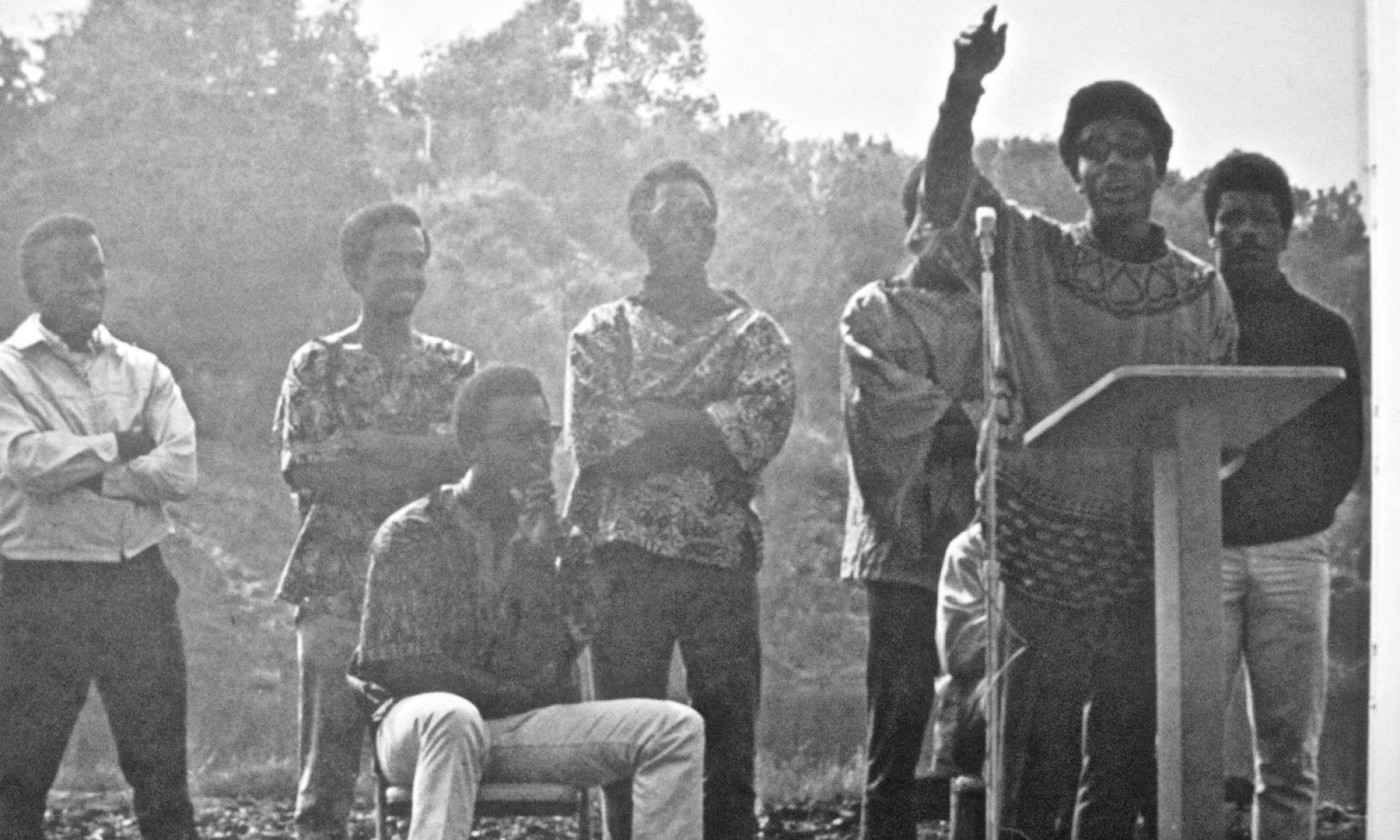
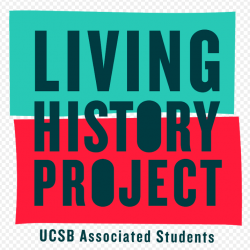













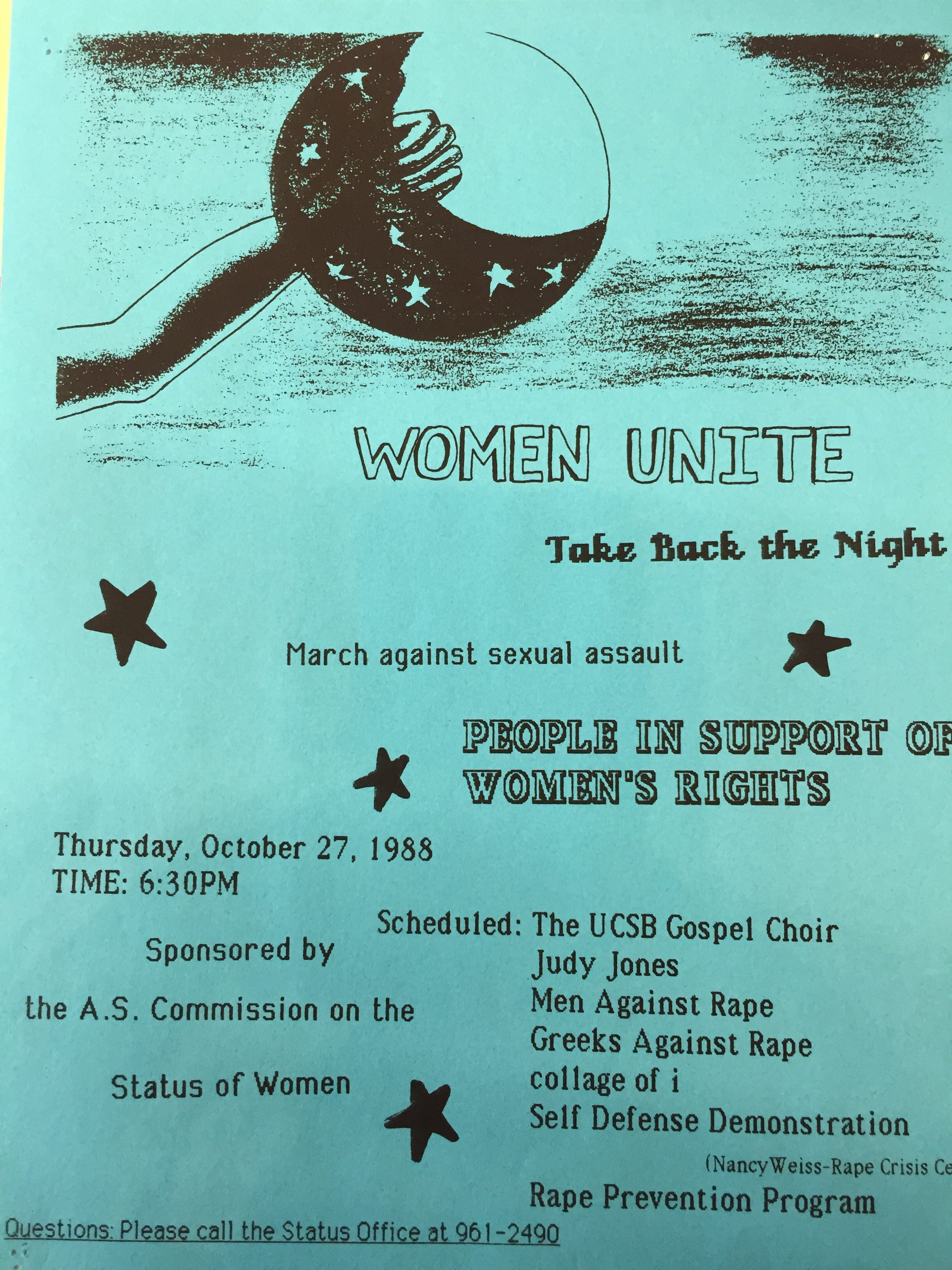
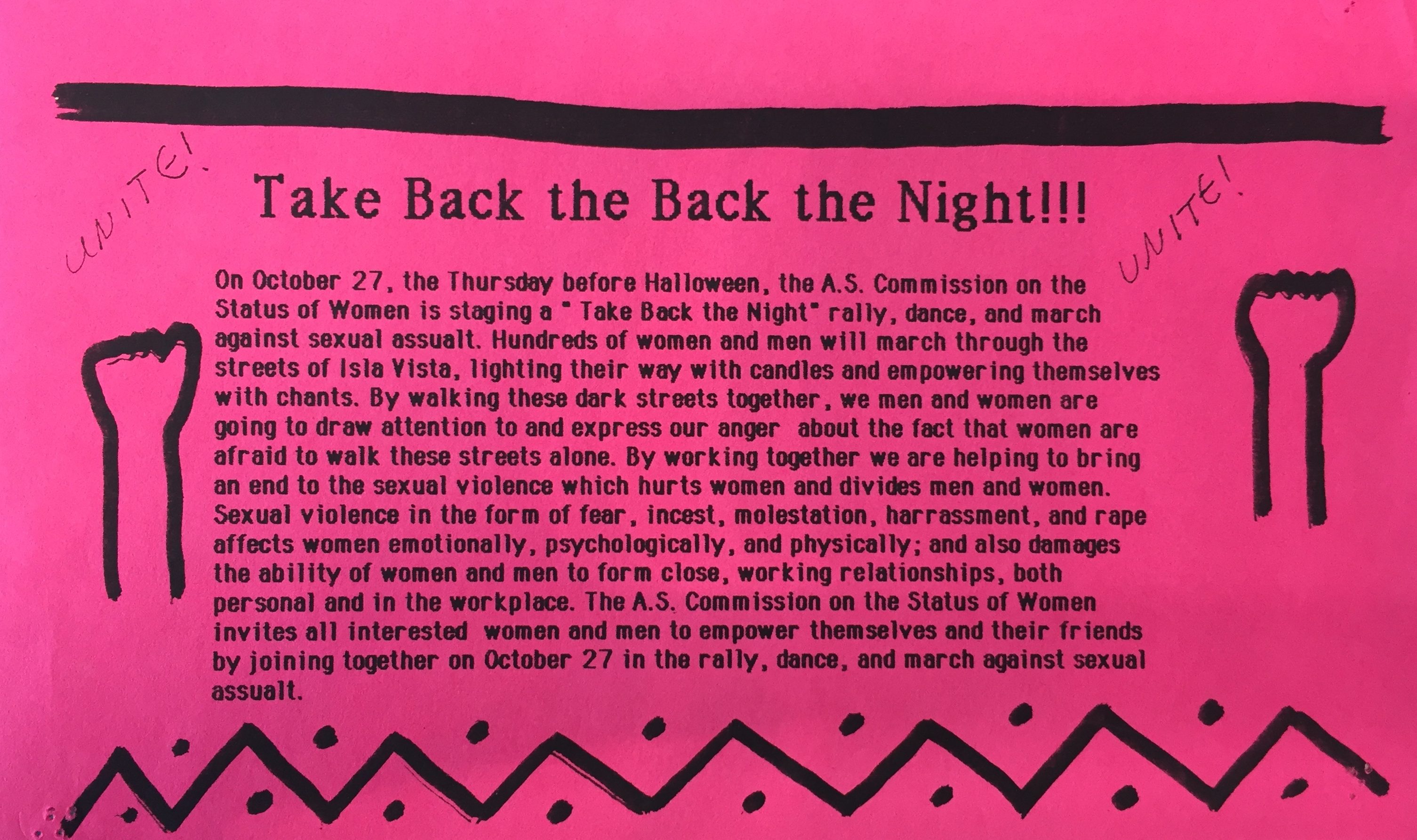

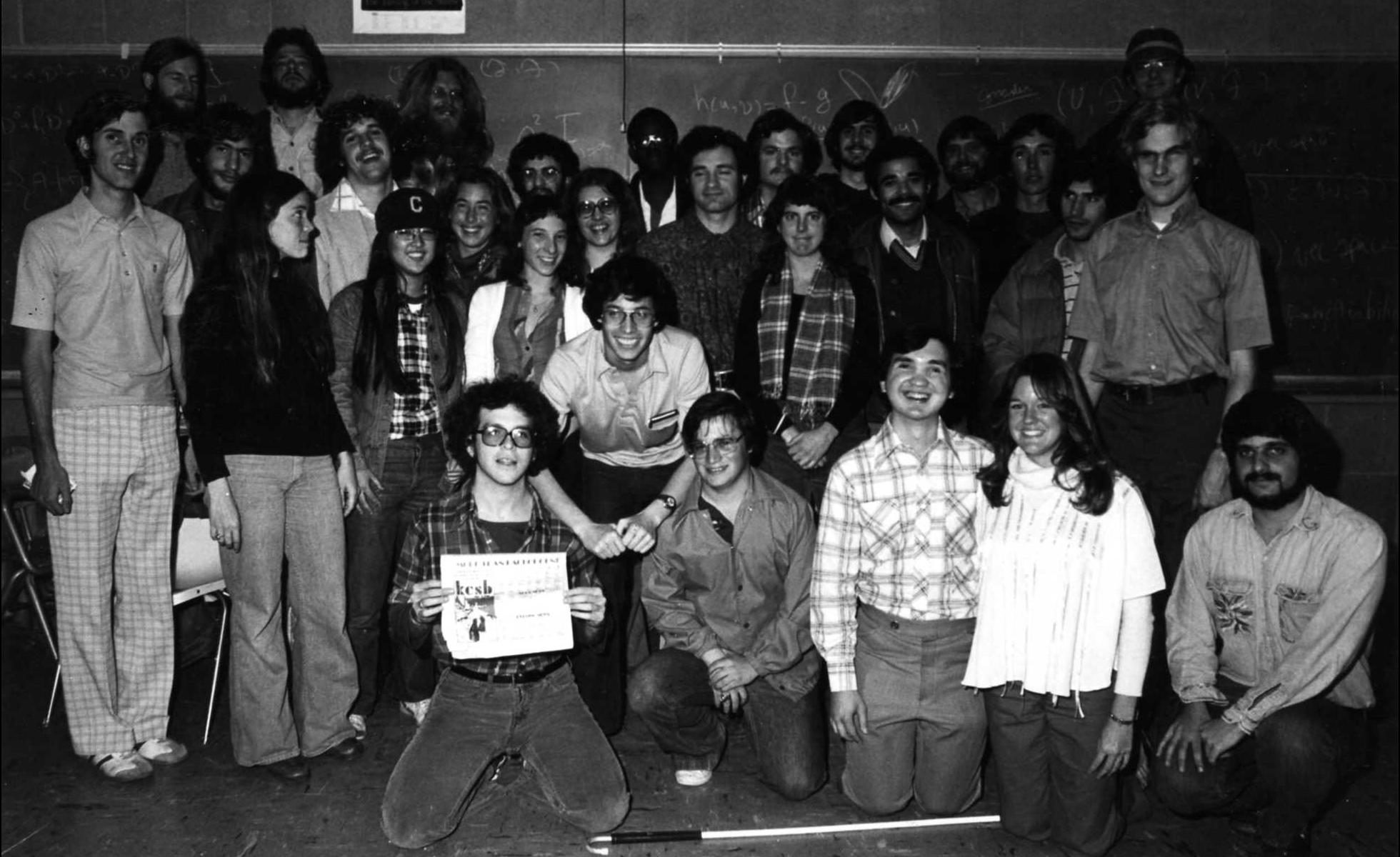




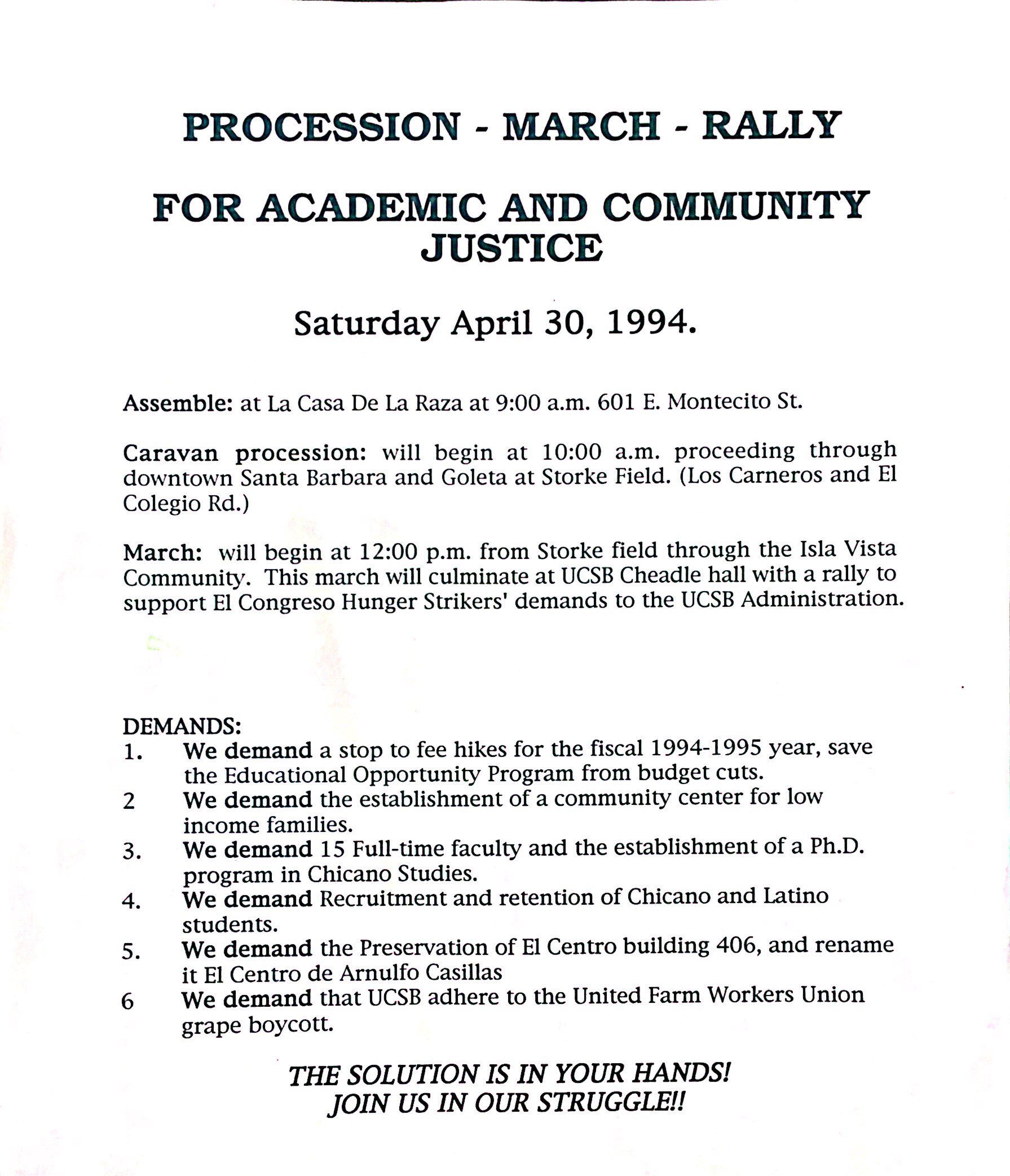

 [(
[(
